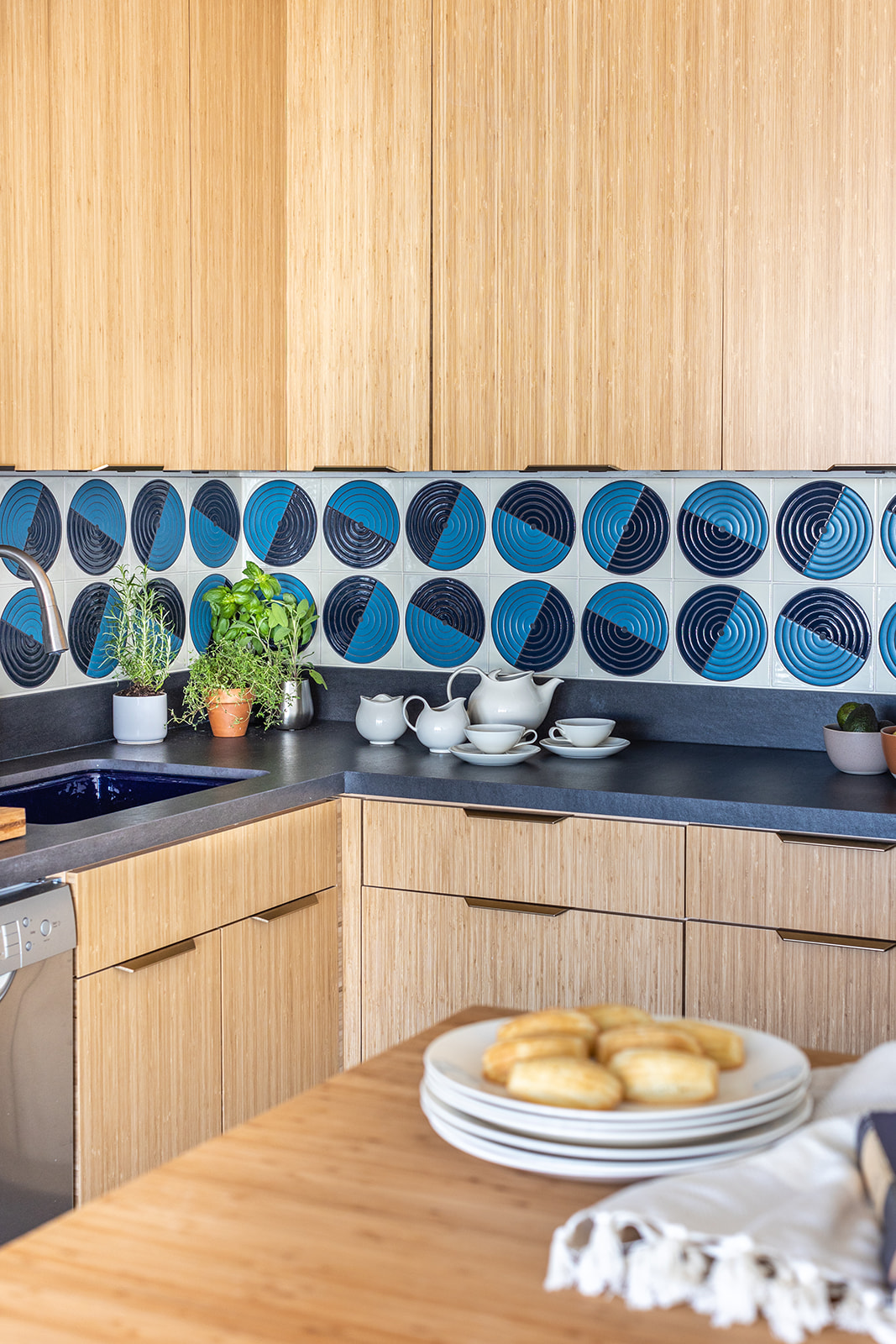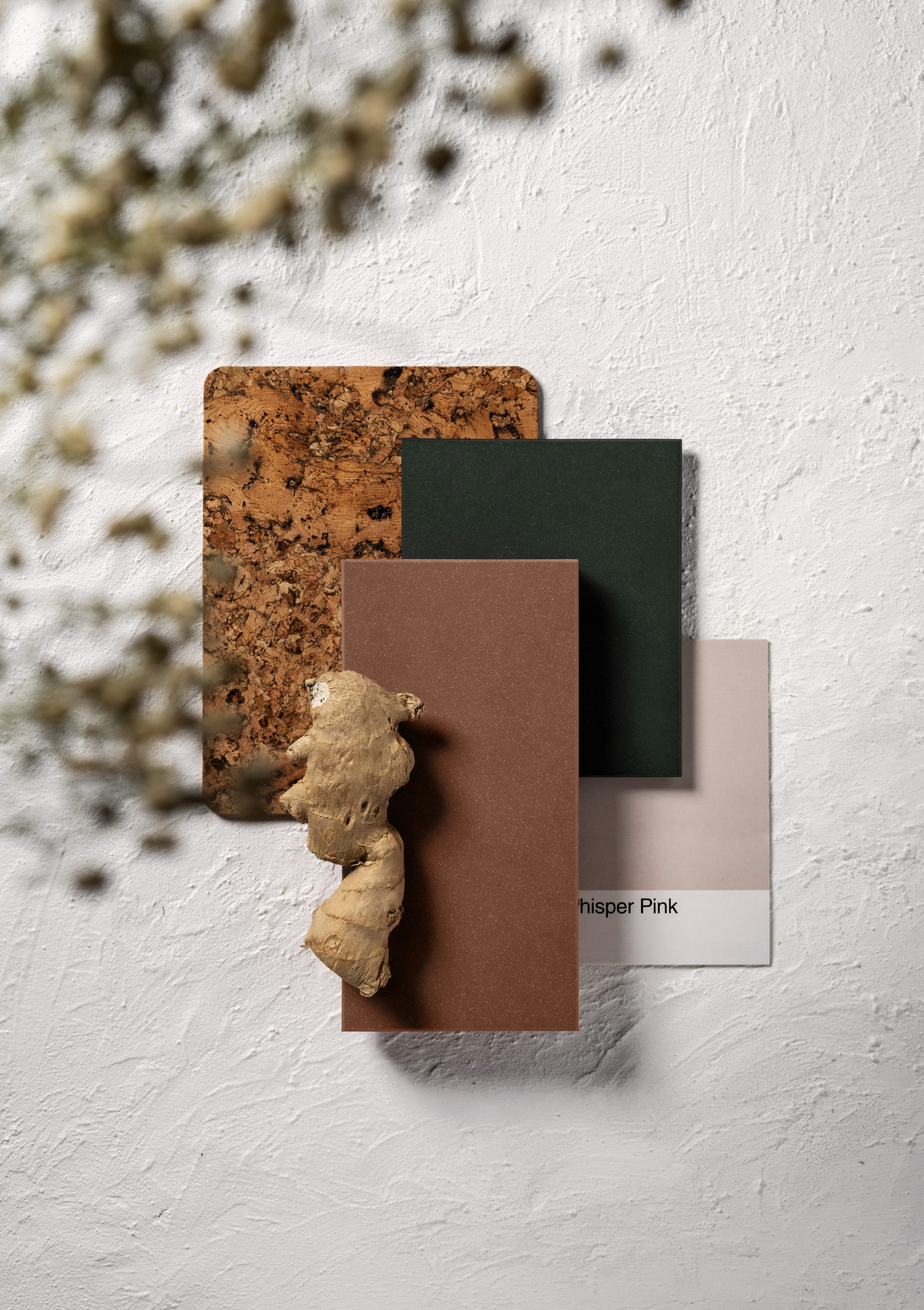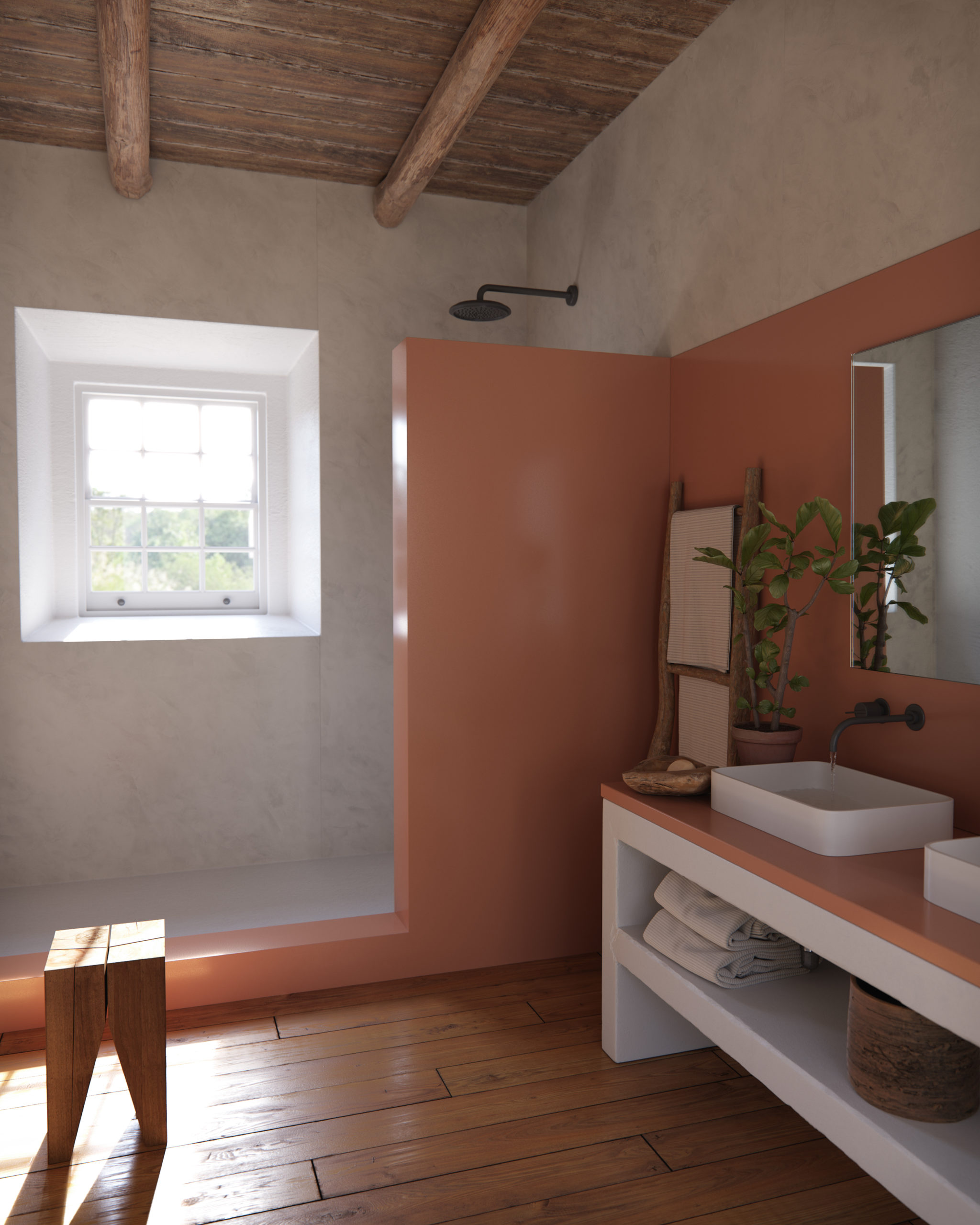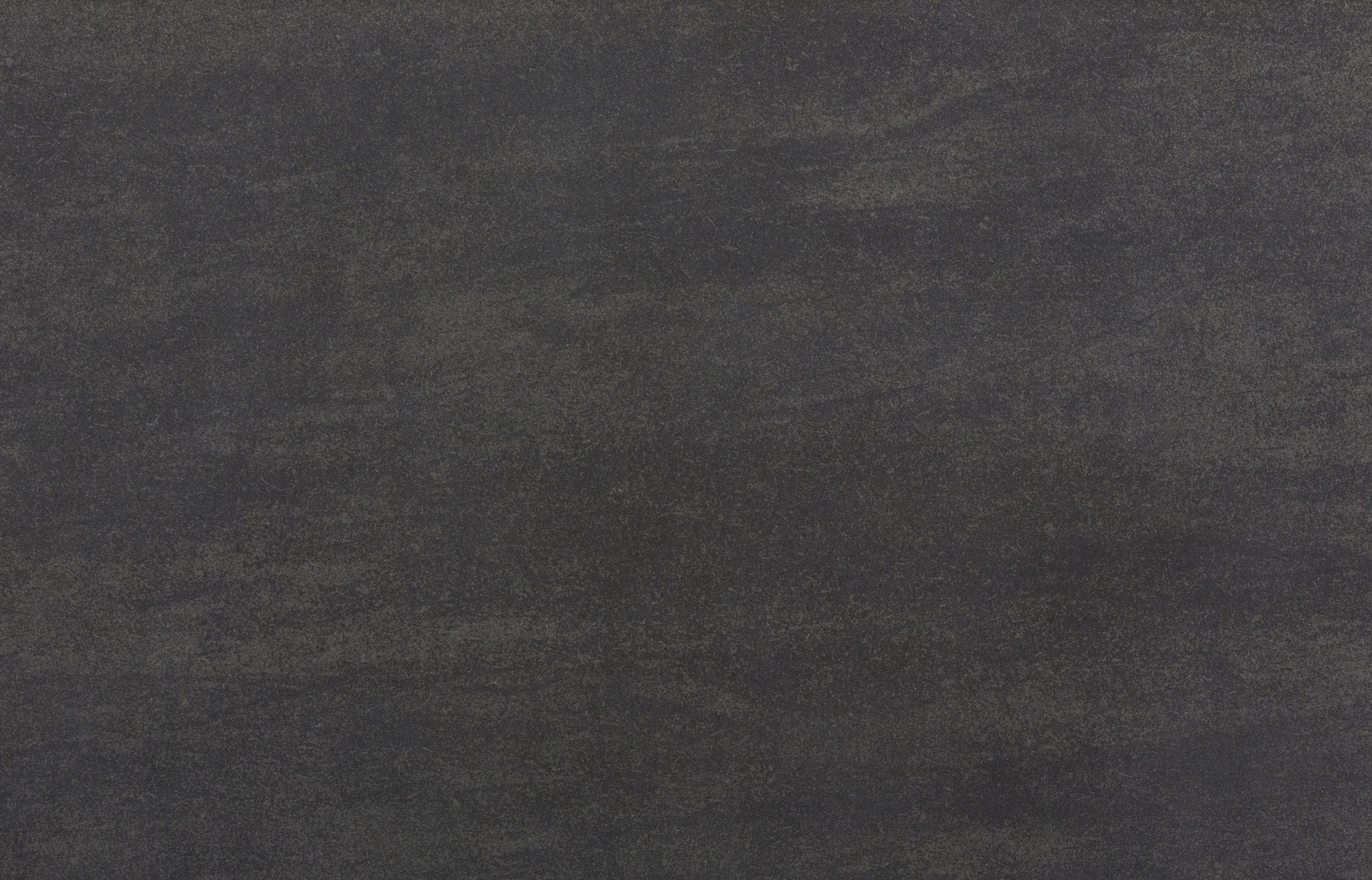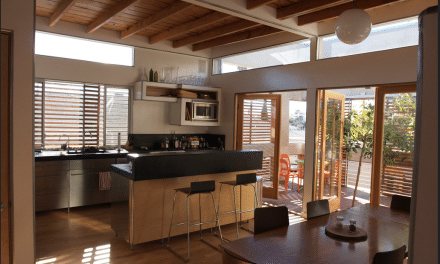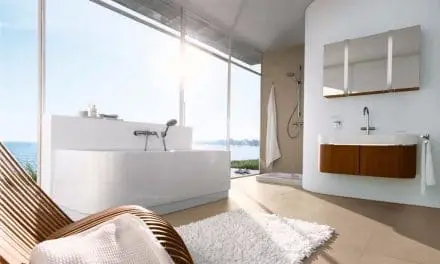Dekton and Silestone images courtesy Cosentino
By Elaine Markoutsas
The topography around Almeria, in the southeast of Spain, is a revelation. From almond and orange trees to lush evergreen forest to an arid landscape dotted with cacti, which in the 1960s and ’70s drew spaghetti westerns and movies like “Lawrence of Arabia” and “The Good, the Bad and the Ugly.” In fact, there still is a ghost town of abandoned movie sets.
But there are also quarries. For the Cosentino family, these rugged, rocky caverns represent roots that date to 1940. That’s when the matriarch and patriarch of the family, Eduarda and Eduardo, began mining macael—the pristine white marble known as “white gold”—in the Sierra de los Filabres Mountains. The same elegant marble was used for centuries by Phoenicians, Greeks, Romans and notably at the iconic Alhambra Palace in Granada, Spain.
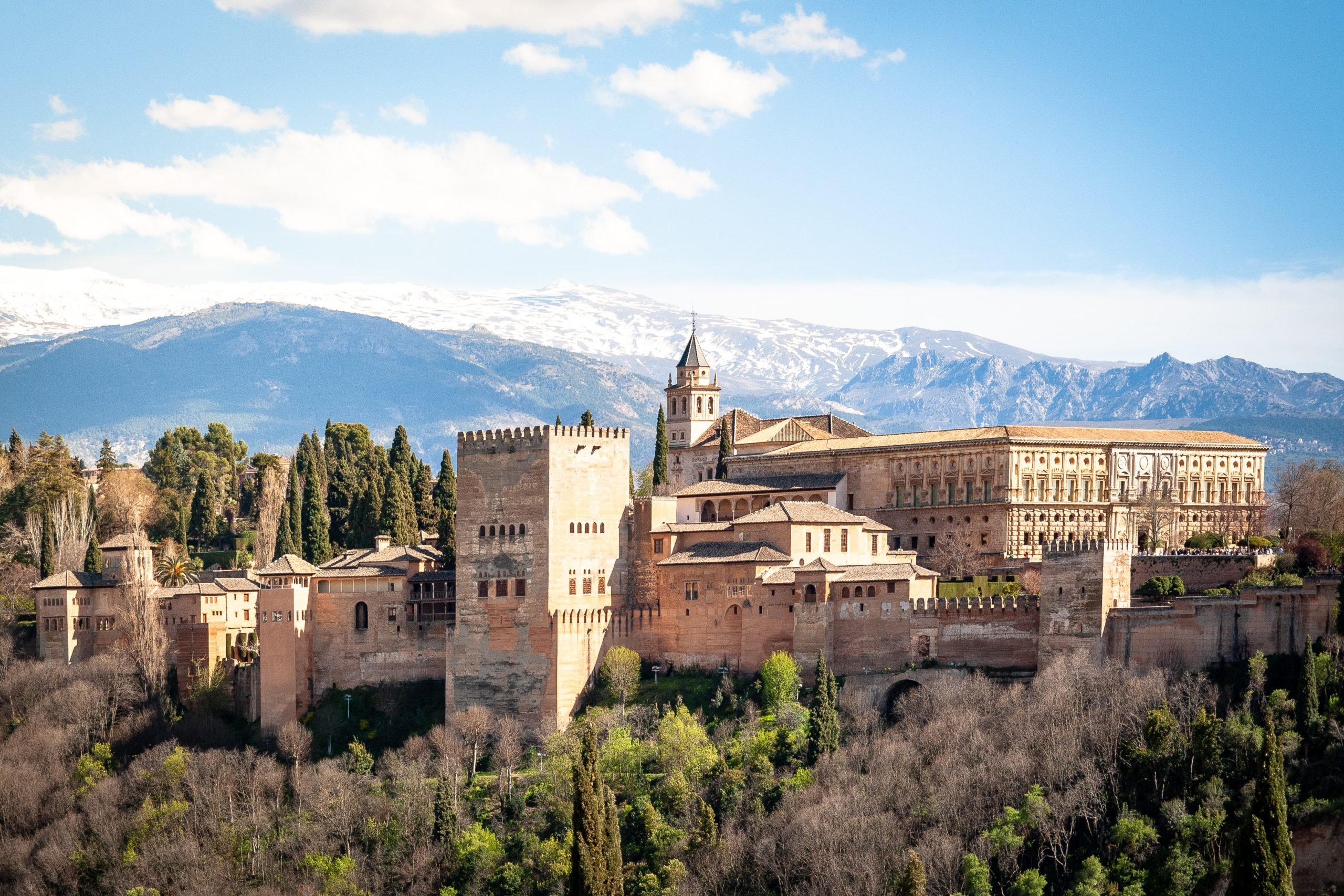
Photo by Dimitry B
A Legacy Is Born
The elder Cosentinos probably had no idea that they were planting the seeds for a generational family business. At the time, there was no buzz about threats to the environment. Or being socially responsible. And yet they felt a certain responsibility to their community, which they instilled in their children. An evolution began in 1979 with the next generation and the launch of Mármoles Cosentino SA.
“The two brothers (Francisco and Eduardo) wanted to reduce the waste in the marble industry,” said Luis Hens del Campo, head of circular economy for the Cosentino Group, on a zoom call from headquarters in Almeria. “They wanted to create a new product.“
Practice Makes Perfect
But the first effort was a disaster. “The calcium carbonate in the marble was not a good countertop material,” says Hens del Campo. “They traveled around the world and found a way to create an agglomerate with different materials—silica and polyester resin.”
It took years of research and development, but in 1990, it began to pay off. Silestone, a blend of 90 percent quartz and resins under the Cosentino brand, debuted. And it has since become one of the world’s leading quartz brands, with around 60 percent of sales in the United States. Other Cosentino products followed, but the most revolutionary introduction in 2013 was Dekton. “With Dekton, we took into consideration eco-design,” says Hens del Campo.

Dekton’s Sintered Stone Makes A Lasting Environmental Impact
It’s an ultra-compact surfacing material made up of quartz, porcelain and other raw materials, with pigment, design and texture. In addition to countertops, it’s suitable for flooring and walls as well as exterior cladding, since it has no resin component.
“Its manufacturing process simulates igneous rock formation,” says Hens del Campo, describing what would otherwise be a natural process taking place over thousands of years. A proprietary sintering technology replicates the metamorphic process of the rock. The key is high temperature compression. “The compacting has to align the particles to achieve sinter porosity by forcing out air and moisture,” he says.
This results in a non-porous material with a flexural strength that is five times that of granite. Dekton is resistant to UV rays, scratches, stains, thermal shock (extreme hot and cold) and has very low water absorption.
Slab sizes are large-format—56-by-126 inches, with thicknesses of 4, 8, 12, 20 and 30 millimeters. Currently, 70 colors are available (shown above is Bromo, shown below is Khalo), with textures that look like wood, suede, metal, and concrete. Around 2,000 slabs are produced per day, and the company expects to double that production in coming years.
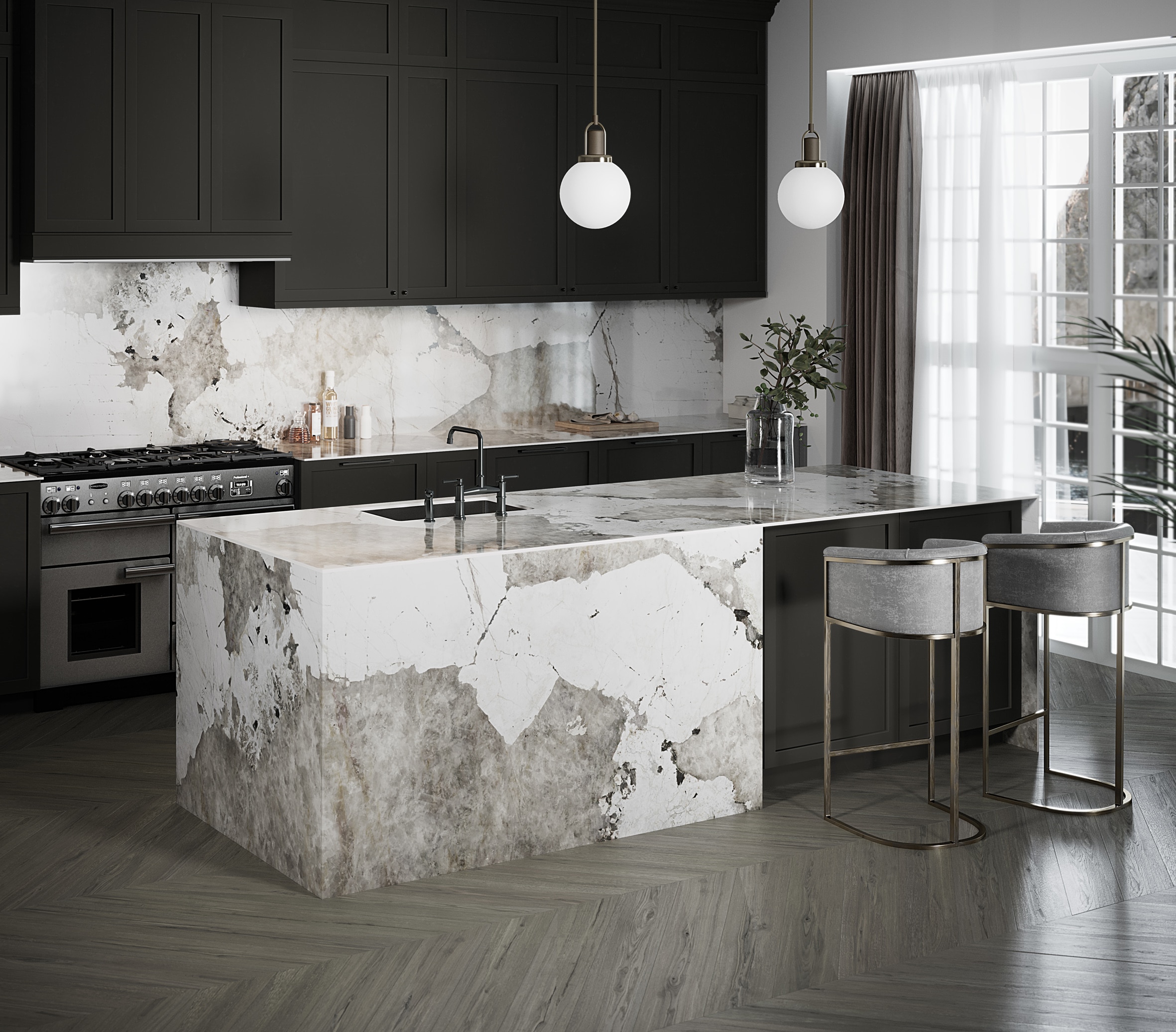
An Innovative Leader In Sustainability
The brand’s newest technology, Silestone HybriQ+, is the most sustainable to date. A hybrid material as its name teases, the material is composed of premium minerals, quartz and recycled glass from bottles or windows—around 20 percent recycled product. The manufacturing process employs 99 percent reused water and 100 percent renewable electric energy, making it a carbon neutral collection.
To further its sustainability efforts, Cosentino operates its own nonhazardous waste treatment and recovery plant, which includes recycling rejected material generated in Dekton’s production process and re-using it to produce new Dekton slabs (P.S., Dekton is also a carbon neutral collection). Cosentino also offsets all greenhouse gas emissions for the lifecycle of the Silestone Sunlit Days collection (pictured above) in partnership with the Voluntary Carbon Market.
And they’re showing no signs of stopping. In the works is the construction of what will be the largest photovoltaic self-consumption installation in Spain thanks to 37,000 solar panels. It’s part of the brand’s 2030-2050 decarbonisation strategy and will also include a biodiversity recovery program that will plant flora and autochthonous species.
“Cosentino always has tried to be a leader in sustainability in this market,” says Hens del Campo, “before it was a trending topic.” Now with the third generation at the helm—Francisco’s son Eduardo is CEO of the brand in North America—Cosentino continues to empower the circular economy.
ENVIRONMENTAL CERTIFICATIONS
Ensuring transparency and sustainability throughout the lifecycle of their products, some of Cosentino’s certifications include:
GREENGUARD
GREENGUARD Certification ensures that a product has met some of the world’s most rigorous and comprehensive standards for low emissions of volatile organic compounds (VOCs) into indoor air. The GREENGUARD Gold standard includes health-based criteria for additional chemicals and also requires lower total VOC emissions levels to ensure that products are acceptable for use in environments such as schools and healthcare facilities.
EPD
An Environmental Product Declaration (EPD) is an independently verified and registered document that communicates transparent and comparable information about the life-cycle environmental impact of products. Having an EPD for a product does not imply that the declared product is environmentally superior to alternatives—but it is a transparent declaration of the life-cycle environmental impact.
ISO 14001
ISO 14001 is an internationally agreed-upon standard that sets out the requirements for an environmental management system. It helps organizations improve their environmental performance through more efficient use of resources and reduction of waste, gaining a competitive advantage and the trust of stakeholders.
CRADLE TO CRADLE
The Cradle to Cradle Certified Product Standard guides designers and manufacturers through a continual improvement process that looks at a product through five quality categories—material health, material reutilization, renewable energy and carbon management, water stewardship, and social fairness. A product receives an achievement level in each category—Basic, Bronze, Silver, Gold, or Platinum—with the lowest achievement level representing the product’s overall mark.
#EcoRenovate And Its Material Mix
Eco-friendliness was among the reasons Dekton was the kitchen countertop of choice for Elemental Green’s #EcoRenovate project. This encompassed the renovation of a penthouse unit inside the iconic University Park Condominium towers, designed in the 1960s by I.M. Pei and Araldo Cossutta. Elemental Green was proud to have Cosentino join as a sponsor for our renovation and be a part of our curated selection of mindful products that would bridge past, present and future inside the home.
Elemental Green has been keeping a keen eye on sintered stone generally and Dekton in particular as a great addition to eco-friendly surfaces. Bromo (shown above), one of the newest color options from Dekton’s Natural Collection, has a dark gray-blue slate-like appearance, with subtle, faded graphics and texture. This texture and coloring evoke concrete—a major element of most modernist architecture examples, including University Park Condominium. Yet it contrasts with the white concrete of the exterior to bring grounding.
Here, Sheridan Foster, founder and CEO of Elemental Green, expounds upon what drove the selection.
Q: What spoke to you about the color, the finish, the look of Bromo?
A: We were looking for something that would not compete with vividly patterned backsplash by Fireclay Tile and that would look great even when in use. The matte finish and darker color hides spills until they can get cleaned up. It brings the kitchen up to date with a bit of an industrial feel without clashing with the modernist vibe.
Q: What do you like about the mix of materials in the space?
A: I’m known for bringing in lots of things I love into one space and finding a way to make that work. We used handmade tile by Fireclay Tile, Plyboo bamboo cabinets from French Cabinetry, and Dekton’s sintered stone as the main added materials, with light-colored walls courtesy Recolor and the existing appliances of stainless steel.
The Dekton finish adds a bit of texture without making things busy, and its dark shade makes the tiles really pop. Keeping the countertop dark also allowed us to go with a deep blue sink without making it an eye-catching distraction.
Q: What appealed about the practical, day-to-day use of the product?
A: Dekton is virtually indestructible in use. It resists cracking and chipping. UV light doesn’t discolor it. Hot pans can go right on the surface. Spills wipe up without staining. It’s a messy cook’s dream.
Q: What are other benefits for homeowners to choose sustainable products like Dekton?
A: The materials in sintered stone are sustainably sourced. They do not off-gas toxic gases as granite or other materials can. It is low maintenance with no need for sealing. And it has a very long life so it does not require resources to replace in a throwaway culture.
We’re thrilled that #EcoRenovate has attracted exceptional sustainable brands such as Fireclay Tile, Recolor paints, Dekton by Cosentino, Avocado, Sabai, Chairish, Earth Weave, and French Cabinetry. Learn more about our sponsors and design partners throughout the #EcoRenovate journey.
